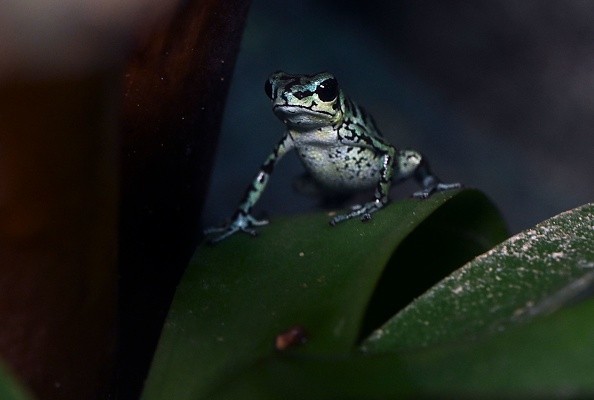When ecologist Jeremy Feinberg was researching about southern leopard frogs for his Ph.D. at Rutgers University in New Jersey, he observed that the leopard frogs on Staten Island did not sound properly in the late 2000s.

The Discovery of Atlantic Coast Leopard Frog
They resembled southern leopard frogs, but their giggle was staccato rather than the customary rolling one. Their voice sounded like chuck. According to Feinberg and his colleagues, the frogs were in fact not southern leopard frogs at all, as previously thought.
The discovery was widely publicized in a variety of publications, including magazines and newspapers. A brand-new frog in the heart of New York City? It was typical of the new-species genre in terms of tone in these pieces.
Thousands of new species are described by scientists each year, and the media follows suit, announcing them to the world. New species of octopus, electric eel, and beaked whale were widely highlighted in 2021, according to National Geographic.
This information, however, is frequently overlooked. Many of these species have been around for a while, so they're not really groundbreaking. For example, individuals had seen Feinberg's Atlantic Coast leopard frogs before. They didn't recognize that the creature was a distinct species at the time of their encounter.
Also Read : The Cryptic Life of the Burrowing Frogs
Morphologically Cryptic Species
There is a rethinking going on in biological taxonomy, the study of identifying and classifying living things. In the last two decades, advances in DNA sequencing have allowed scientists to reevaluate species they previously believed to be well-understood. It's not uncommon for them to discover not just one, but two or more distinct species.
Morphologically cryptic species, as they are known, look alike yet have different genetic or other characteristics. Even among the most intensively researched life forms, there are clones everywhere.
Since 1982, the number of primate species has increased by a factor of two. Many new species of animals and plants have been discovered in recent years, including cryptic fish, butterflies, lizards, squids, and pine trees.
The idea that we may be misunderstanding many of the animals around us has a wide range of consequences. Although taxonomists now know that "leopard frogs" are not a single species, pharmaceutical companies have long used the frogs to test the toxicity of their drugs.
Now, you're testing a medicine on four or five different species, some of which might have a different response to different stimuli, but you're testing them as if they're one, Feinberg said.
As the Atlantic Coast leopard frog's narrative demonstrates, the repercussions of human misidentification can be far more serious-even existential-for the creatures involved.

Does Cryptic Species Exist in Different Taxonomic Groups?
Homo sapiens sapiens have a unique method of perceiving the world around them. Based on their similarities and differences, humans group living things into nested groups.
Modern scientific taxonomy was laid out in the 1700s by Swedish naturalist Carl Linnaeus, who drew on prior "folk taxonomies". Taxonomies such as the folk and Linnaean taxonomies began with broad categories such as "animal" and "plant" before narrowing down to more specific categories such as "tree," "fish," and "bird."
Despite this, humans are able to intuitively classify the things around them into species. Organisms evolve in isolation from one another, whether by distance or by habit.
Due to chance or because they provide an advantage, little variations accumulate in these populations until what was once one species becomes two. Some species are more distinct than others as a result of this process' cumulative nature, while others aren't.
Related Article : 79 New "Cryptic" Species of Sharks Discovered
For more news, updates about cryptic species and similar topics don't forget to follow Nature World News!
© 2025 NatureWorldNews.com All rights reserved. Do not reproduce without permission.





